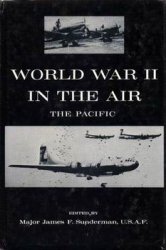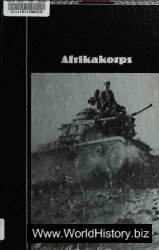Air attack next morning destroyed Tanaka’s remaining transports: only about 4,000 troops and little materiel got ashore. US naval and air superiority off Guadalcanal was now firmly established and, notwithstanding Tanaka’s victory at the Battle of Tassafaron-ga, November 30—December 1, Japan made no further large-scale reinforcement attempts. RO’N.
Guards Armoured Division. British Army. Formed 1941 from several Guards brigades; fought throughout the Northwest European Campaign 1944—45. Its armoured regiments were manned by retrained Foot Guards battalions and its armoured car regiment by the Household Cavalry. The division featured in the liberation of Brussels and in the attempt to relieve 1st Airborne Division at Arnhem.
Guards Division. British Army. An elite formation serving on the Western Front in World War I. Its distinctive “Gladeye” divisional badge was taken up by the Guards Armoured Division in World War II.
Gubbins, Sir Colin McVean
(1896-1976). Br. Fought as a regular gunner officer in France, Russia and Ireland 1914-21; led independent companies (forerunners of commandos) in Norway 1940; organized civilian stay-behind parties to resist anticipated German invasion of England, 1940; director of operations, soe from November 1940; became its executive head, September 1943, until it was disbanded January 1946.
Guderian, Gen Heinz (18881954). Ger. Guderian served as an infantry and staff officer during World War I but early in his postwar career he specialized in mechanized warfare. In 1922 he joined the Army Transport Department of the Defence Ministry and by 1934 was Chief of Staff of the Armoured Corps Command. He published his theories of armoured warfare in a book, Achtung Panzer, in 1937. His revolutionary tactics of “blitzkrieg” warfare echoed the dynamism and aggression of Nazi ideology and were to provide an ideal tool for Hitler’s war plans. Its efficacy was revealed in the German victories of 1939 and 1940 during which Guderian commanded XIX Corps in the invasions of Poland and France. His armoured thrust at Sedan proved crucial to the campaign’s success and he pressed on to the Channel coast. Although he enjoyed further good fortune during the invasion of Russia, he clashed once again with the High Command. He criticized their failure to exploit the initial success and, on December 26 1941 was relieved of his command. However, Guderian returned in February 1943 when he was appointed Inspector of Panzer Troops. He continued to oppose Hitler on many issues but was nevertheless made Chief of the General Staff on July 21 1944. However, there was little he could do to alter the FiihrePs orders and he had little control over the disposition of German forces. On March 28 1945 he argued once too often and was sent on “convalescent leave”. He was captured by American forces on May 10 1945. MS.
Guernica, destruction of ( April 26 1937), Spanish Civil War. Halfway through the Vizcaya campaign. Col von Richthofen, the air operations commander of the Condor Legion, decided to repeat the experiment of Durango, a town at an important crossroads behind the enemy line, which his aircraft had destroyed on March 31. Guernica, the old Basque capital, was selected for similar reasons. On April 26, Guernica’s market day, his heavy squadrons (three of Junkers 52 and one of Heinkel 111) carpet-bombed the town in rigid formation, shuttling back to Burgos to reload. Meanwhile Heinkel 51 fighters machine-gunned the fleeing civilians. The town was destroyed with bombs from 1,1001b (500kg) down to small incendiaries. Casualties amounted to about one-third of the population: 1,654 killed and 889 wounded. In the international outcry which followed, the Nationalists claimed that the Basques had set fire to their own ancient capital. AB.
Guerrilla. Irregular operations by amateur soldiers, often in plain clothes, against oppressive regimes or foreign occupiers; sometimes near banditry or terrorism. See also maquis.
Guevara, Ernesto (“Che”) (1928
1967). Argentinian. Guevara experienced guerrilla warfare in Guatemala, 1954, and in 1956-59 was Fidel Castro’s chief aide during the Cuban Revolution. His classic Guerrilla Warfare, 1960, stressed rural guerrilla activity and promulgated “the revolution in the revolution”, stating that guerrilla action could create a successful revolution even where the predispositionary conditions (as defined by orthodox Marxism) did not exist. In 1965 he set out with a small band — the foco, “eye of the hurricane”, intended to be the nucleus of a guerrilla army — to revolutionize Latin America. In October 1967 he was captured and shot by Bolivian troops.




 World History
World History









